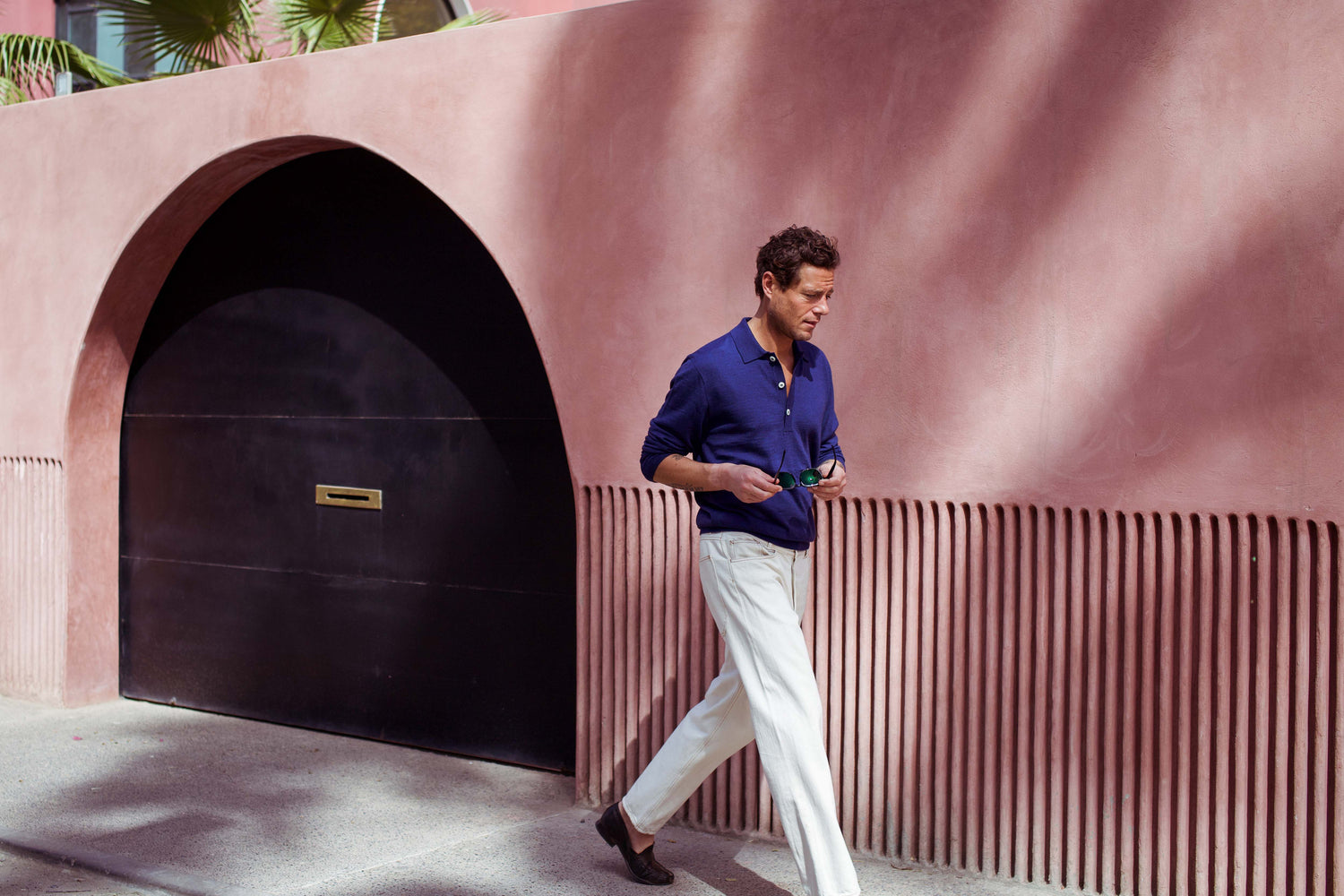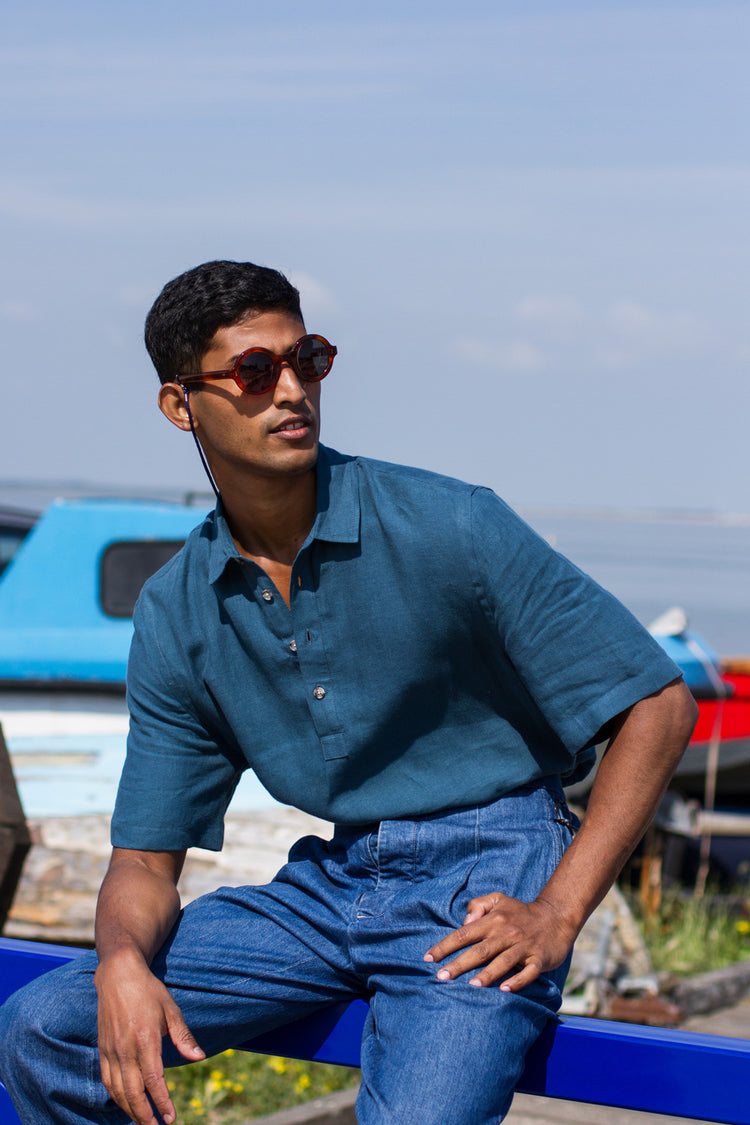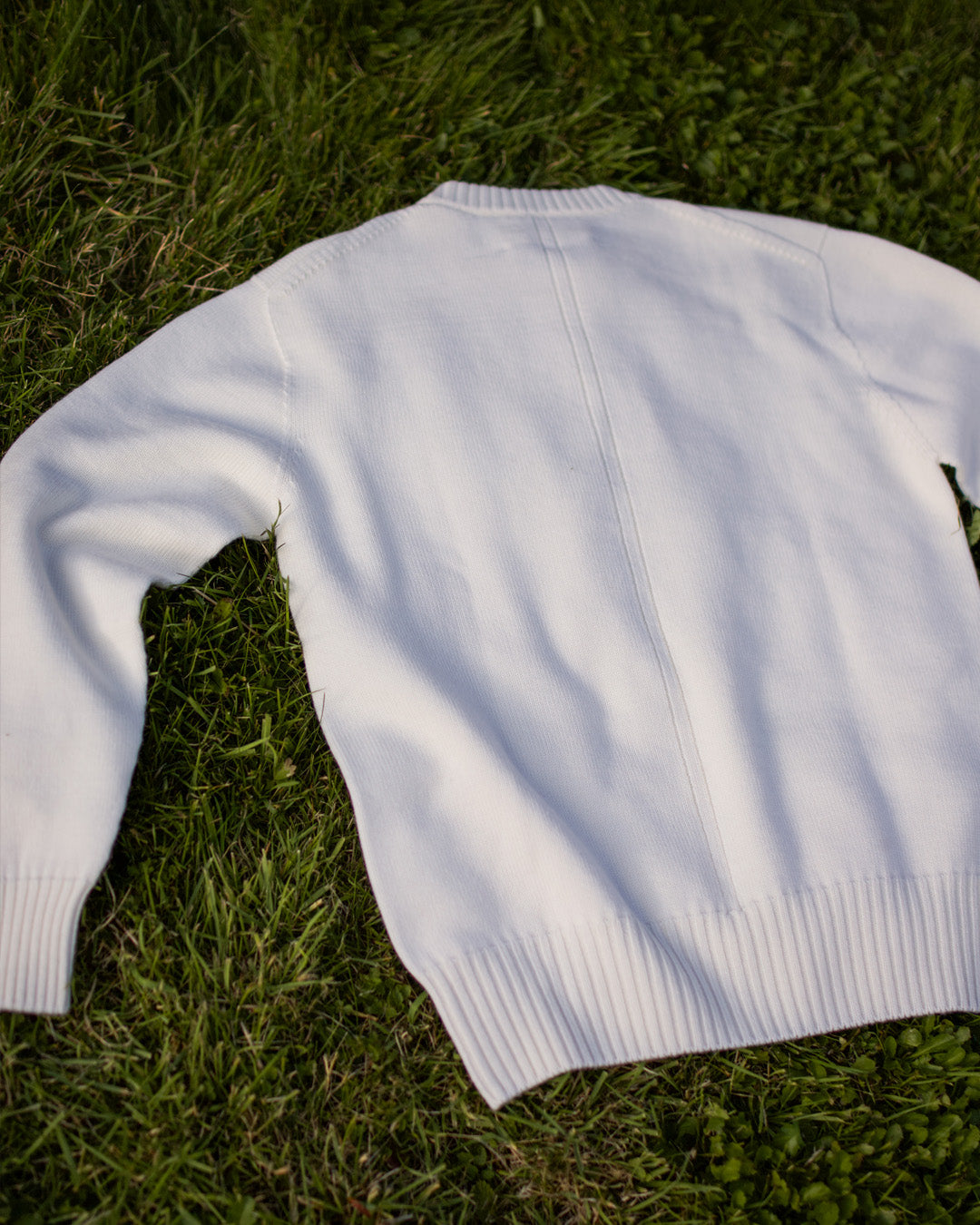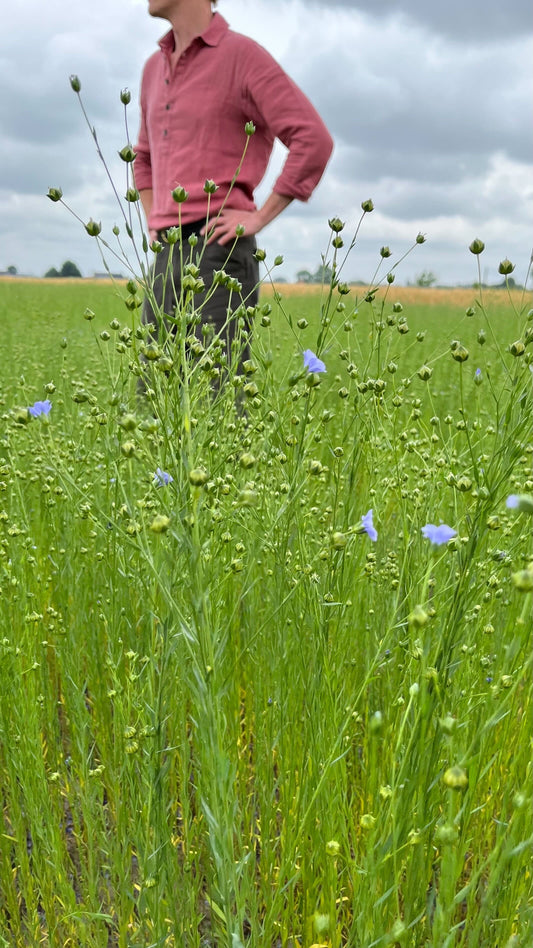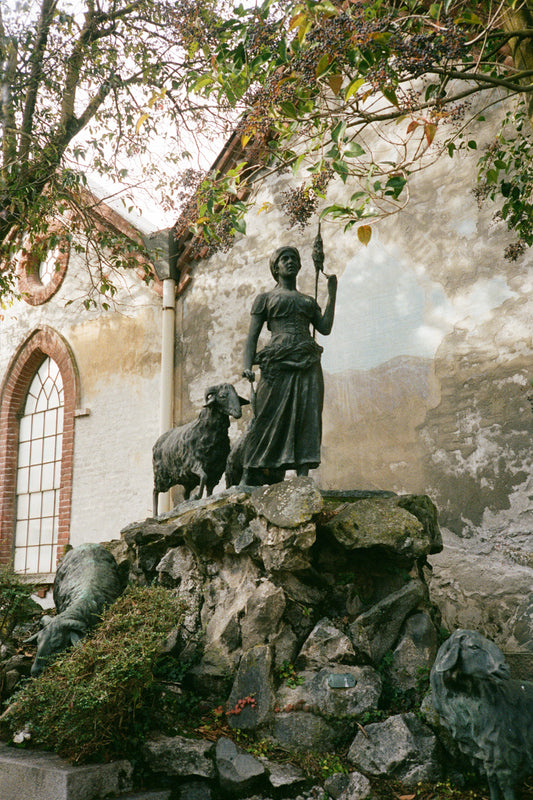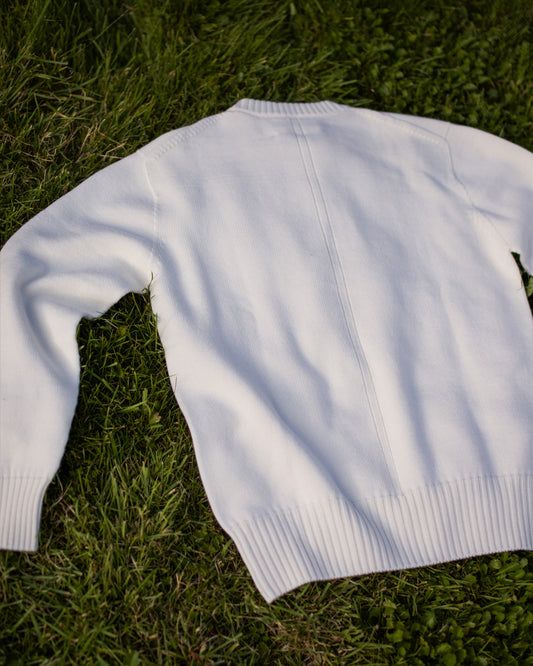I am unashamedly, unabashedly an autumn guy – a true automnophile, to coin a phrase. Of course, I am not averse to wearing a pair of shorts and a billowy button-down in the sweltering heat when I’m on a beach holiday (drink with little umbrella in hand), but here in the UK, the hotter months don’t suit me. Throughout the summer, sweating away on the Tube, I long for walks outdoors on crisp, cool days with the first smell of wood smoke wafting through on a chilled breeze.
This love for the season is in great part linked to the clothes needed to navigate it. Dressing for autumn is far more enticing to me than any other season – creating layers of interest and insulation, slipping into loafers with thick wool socks, pulling on a cap and a decadently girthy scarf. Certainly, my fondness for knitwear plays a large role in my love for the season. Not only is a knitted crewneck the perfect layering piece, but there’s also a tangible pleasure for both body and soul that can only come from a really good jumper.
I don’t think it’s a leap to ruminate that this feeling of comfort we all seek when searching out jumpers both old and new is actually very specific to the origin story of the piece itself. The contemporary knitted crewneck can trace its roots back to Guernsey sweaters. Back in the sixteenth century, these sweaters were crafted from English Worsted wool by the significant others of fishermen on the British island from which the garment takes its name to protect them from the cold winds whipping off the sea. As exploration led to an increasingly globalised world, the garment’s practicality and protective qualities were enjoyed by seafarers based in places as far away from the UK as the easternmost islands of what is now Canada.
However, the jumper as we know it today began to take shape in the late nineteenth century. With more people than ever living in cities, sports such as tennis, golf, and cycling, not to mention the new-fangled concept of the gymnasium, became popular ways to socialise and blow off steam. The stiff styles worn by men and women at this time needed to evolve to accommodate the rigours of athletic pursuits. Undershirts began to be woven from knitted silk or wool to create breathable, flexible top layers for sport. Soon this shape would gain sleeves and become an outer layer in its own right as this leisurely lifestyle became the height of fashion. Highly detailed and colourful Fair Isle golf sweaters were perhaps the most recognisable style to make the leap into everyday life during the 1920s and 30s, popularised by trend-setters like the Duke of Windsor and Coco Chanel. However, as the twentieth century progressed, the knitted jumper would become an easy-to-wear mainstay of our collective wardrobes.
Of course, those twin strands of protection and leisure woven into the garment’s history are key to its longevity and popularity – but so is the material it is made from. Wool is a wonder fabric, a natural fibre that’s both insulating and breathable, not to mention one that wicks moisture away from the body if you’re overheating. With that in mind, and as someone who has been a fan of Original Fibres since its earliest days, the brand’s venture into wool feels like a natural next step from its roots in linen (also a natural wonder fibre). And it makes perfect sense that Callum and George have approached this venture with the same exacting standards that have become the signature of the brand. The extra fine merino wool they use is sourced from Zegna Baruffa, an Italian mill that crafts its yarns wholly in Italy, creating a fabric from superbly long fibres. The result is a jumper that’s sumptuously soft and less prone to pilling throughout its life with a satisfying hand feel that’s substantial but not at all scratchy. Additionally, the construction with a seam running down the back (not at the sides) and a deep collar, cuffs and hem, delivers the absolute peak of comfort.
It also delivers the height of versatility. Available in shades of ink blue, garnet red and ivory, these are the kind of distinctly wearable colours that will slip easily into your existing wardrobe. Substantial enough to wear in its own right around the house, the real joy of this knit is that its weave is still streamlined enough to layer. Even a light, midweight linen Railway Jacket can be made into a year-round winner by slipping one of these jumpers underneath. Take it into smart casual territory by semi-formalising it with a pair of tailored trousers and chunky lace-ups. For added warmth, add a fine gauge rollneck underneath and wear with your linen Harrington. Whichever piques your style sensibility, there’s no better season to experiment – take it from an autumn guy.
Nick Carvell
